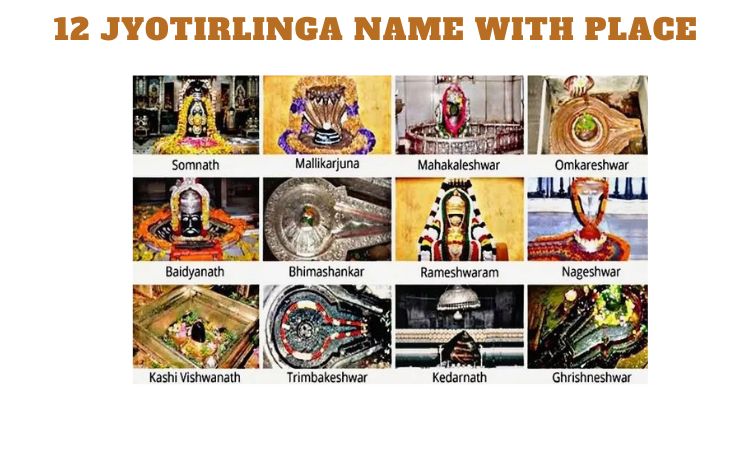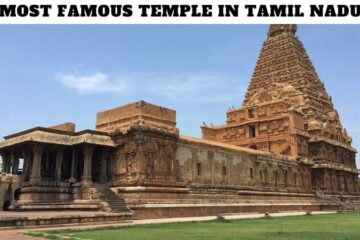
The 12 Jyotirlingas hold a significant place in Hindu mythology and spirituality. These sacred shrines are dedicated to Lord Shiva and represent his infinite presence in the form of a linga. Each of these jyotirlingas has a distinct story, aura, and spiritual significance, drawing millions of devotees and tourists annually. Below, we delve deep into the 12 Jyotirlinga name with place, unraveling their history, importance, and unique characteristics.
1. Somnath Jyotirlinga – Gujarat
The Somnath Temple in Gujarat is considered the first among the twelve jyotirlingas. Located in Prabhas Patan near Veraval, it holds immense historical and spiritual importance. The temple has been destroyed and rebuilt several times, showcasing the indomitable spirit of devotion. Legend states that this jyotirlinga was originally built by the Moon God, Chandra, to honor Lord Shiva.
Key Highlights:
- Location: Prabhas Patan, Gujarat.
- Best Time to Visit: October to March.
- Unique Feature: The temple overlooks the Arabian Sea, offering mesmerizing views.
2. Mallikarjuna Jyotirlinga – Andhra Pradesh
Located in Srisailam, Andhra Pradesh, the Mallikarjuna Jyotirlinga is nestled amidst the scenic Nallamala Hills. It represents the union of Shiva and Parvati and is revered as a place where all sins are absolved.
Key Highlights:
- Location: Srisailam, Andhra Pradesh.
- Best Time to Visit: September to February.
- Unique Feature: The temple is also a Shakti Peetha.
3. Mahakaleshwar Jyotirlinga – Madhya Pradesh
Situated in the ancient city of Ujjain, the Mahakaleshwar Jyotirlinga is unique because it faces south, making it a Dakshinamurti Shiva temple. The temple is particularly famous for its Bhasma Aarti, a ritual performed with sacred ash.
Key Highlights:
- Location: Ujjain, Madhya Pradesh.
- Best Time to Visit: October to March.
- Unique Feature: Known for its underground sanctum and divine energy.
4. Omkareshwar Jyotirlinga – Madhya Pradesh
The Omkareshwar Jyotirlinga, located on the Mandhata Island in the Narmada River, resembles the sacred Om symbol. It is one of the most picturesque jyotirlingas, surrounded by lush greenery and serene waters.
Key Highlights:
- Location: Khandwa District, Madhya Pradesh.
- Best Time to Visit: October to March.
- Unique Feature: Island-shaped like the Sanskrit symbol “Om.”
5. Kedarnath Jyotirlinga – Uttarakhand
Perched in the Himalayan Garhwal region, the Kedarnath Jyotirlinga is one of the most revered and challenging pilgrimages. It is open only for a few months due to extreme weather conditions. Surrounded by snow-capped peaks, the temple exudes tranquility and divinity.
Key Highlights:
- Location: Kedarnath, Uttarakhand.
- Best Time to Visit: May to October.
- Unique Feature: Located at an altitude of 3,583 meters.
6. Bhimashankar Jyotirlinga – Maharashtra
Located near Pune, the Bhimashankar Jyotirlinga is surrounded by dense forests and breathtaking landscapes. It is believed that Lord Shiva appeared here to vanquish the demon Tripurasura.
Key Highlights:
- Location: Pune, Maharashtra.
- Best Time to Visit: September to February.
- Unique Feature: Surrounded by rich flora and fauna, perfect for nature lovers.
7. Kashi Vishwanath Jyotirlinga – Uttar Pradesh
The Kashi Vishwanath Temple, located in the spiritual city of Varanasi, is one of the most visited jyotirlingas. It is believed that a visit to this temple ensures liberation from the cycle of life and death.
Key Highlights:
- Location: Varanasi, Uttar Pradesh.
- Best Time to Visit: October to March.
- Unique Feature: Situated on the banks of the Ganges, known as the “City of Light.”
8. Trimbakeshwar Jyotirlinga – Maharashtra
Nestled near the Brahmagiri Hills in Nashik, the Trimbakeshwar Jyotirlinga is unique as the linga here contains three faces representing Brahma, Vishnu, and Shiva. It is also the source of the sacred Godavari River.
Key Highlights:
- Location: Nashik, Maharashtra.
- Best Time to Visit: November to February.
- Unique Feature: The temple architecture is a fine example of Hemadpanthi style.
9. Vaidyanath Jyotirlinga – Jharkhand
The Vaidyanath Jyotirlinga, also known as Baba Baidyanath Dham, is located in Deoghar, Jharkhand. It is believed that Ravana worshipped Lord Shiva here and offered his ten heads.
Key Highlights:
- Location: Deoghar, Jharkhand.
- Best Time to Visit: August (during Shravan Mela).
- Unique Feature: Known as a healing shrine, where devotees pray for good health.
10. Nageshwar Jyotirlinga – Gujarat
Located near Dwarka, the Nageshwar Jyotirlinga symbolizes protection from negativity and evil forces. It is one of the most tranquil jyotirlingas, attracting devotees seeking peace.
Key Highlights:
- Location: Dwarka, Gujarat.
- Best Time to Visit: October to February.
- Unique Feature: Houses a massive Shiva idol and a serene ambiance.
11. Rameshwaram Jyotirlinga – Tamil Nadu
The Rameshwaram Jyotirlinga, situated on the Rameswaram Island, is closely associated with Lord Rama. It is believed that Rama worshipped Lord Shiva here before crossing the sea to Lanka.
Key Highlights:
- Location: Rameswaram, Tamil Nadu.
- Best Time to Visit: October to April.
- Unique Feature: Famous for its intricate corridors and sacred wells.
12. Grishneshwar Jyotirlinga – Maharashtra
The Grishneshwar Jyotirlinga, located near the Ellora Caves, is the last of the twelve jyotirlingas. The temple is built in a traditional architectural style, featuring intricate carvings.
Key Highlights:
- Location: Aurangabad, Maharashtra.
- Best Time to Visit: October to March.
- Unique Feature: Close proximity to the UNESCO World Heritage Site, Ellora Caves.
Significance of Visiting the 12 Jyotirlingas
Pilgrimage to the 12 Jyotirlingas is considered highly auspicious. Each shrine is a manifestation of Lord Shiva’s supreme power and divine energy. By visiting these temples, devotees believe they can cleanse their karma, attain spiritual growth, and seek blessings for health, wealth, and happiness.
Plan Your Journey
To explore these sacred destinations, it is advisable to plan your itinerary based on weather conditions and festivals. Most of these temples are well-connected by road, rail, and air, making them accessible to pilgrims and tourists alike.


